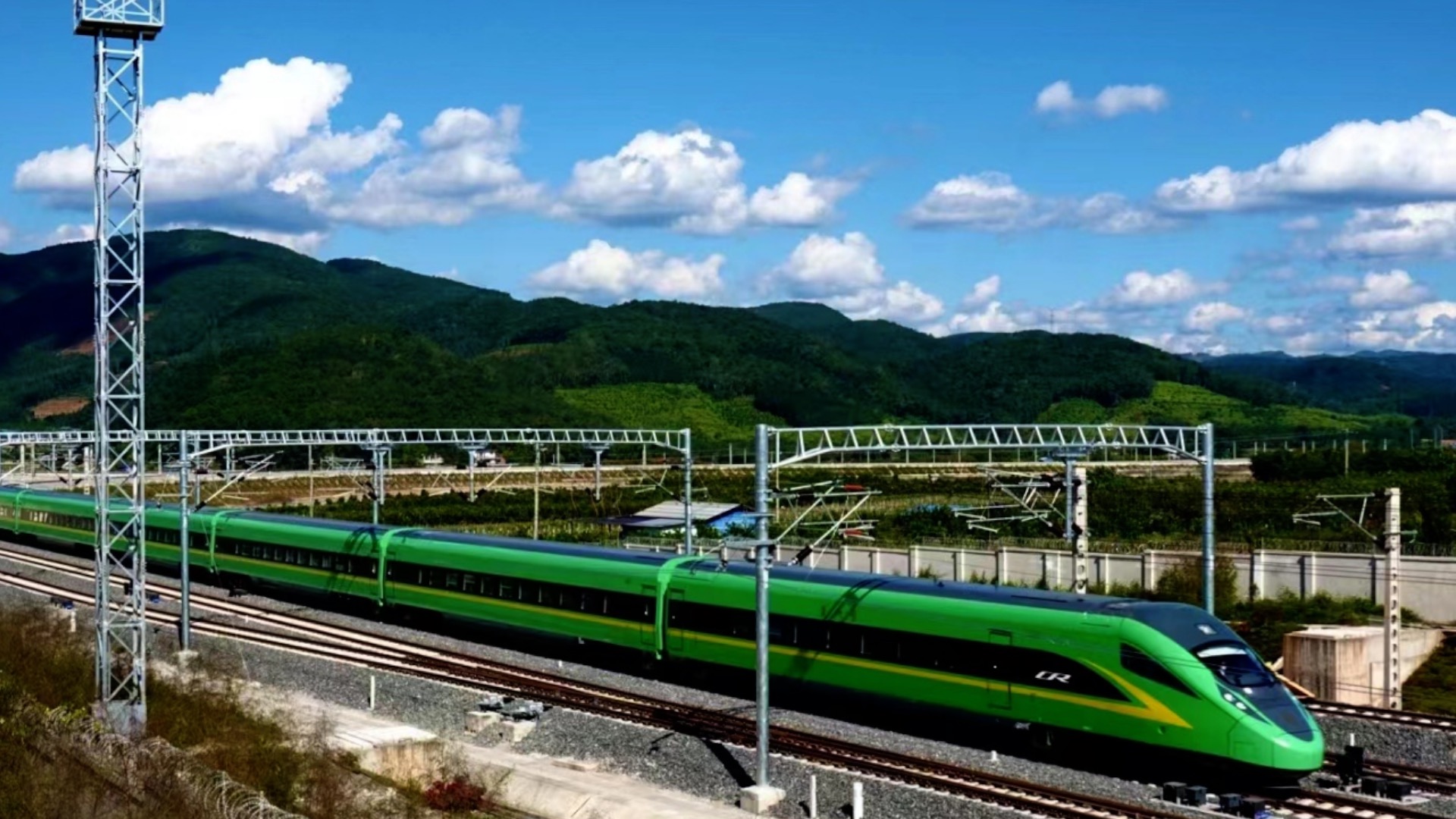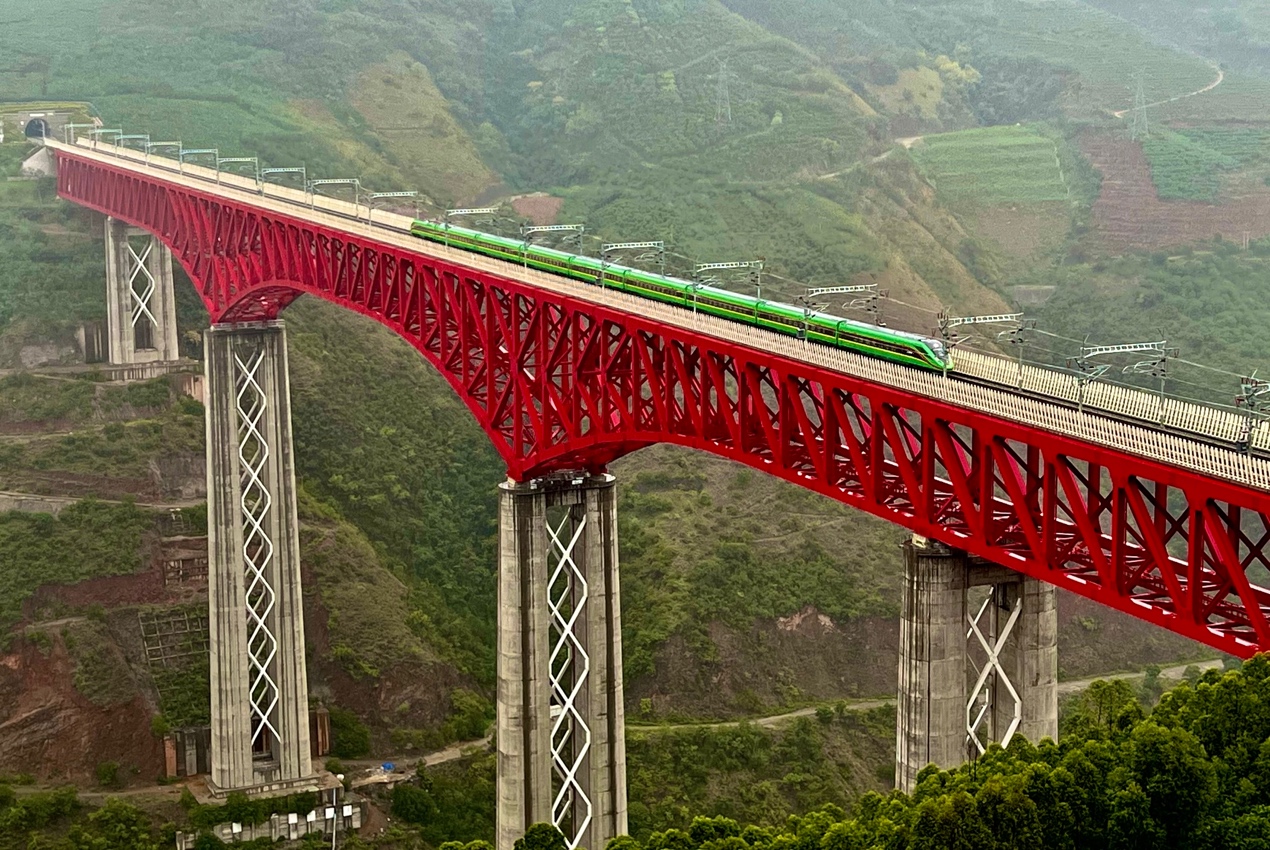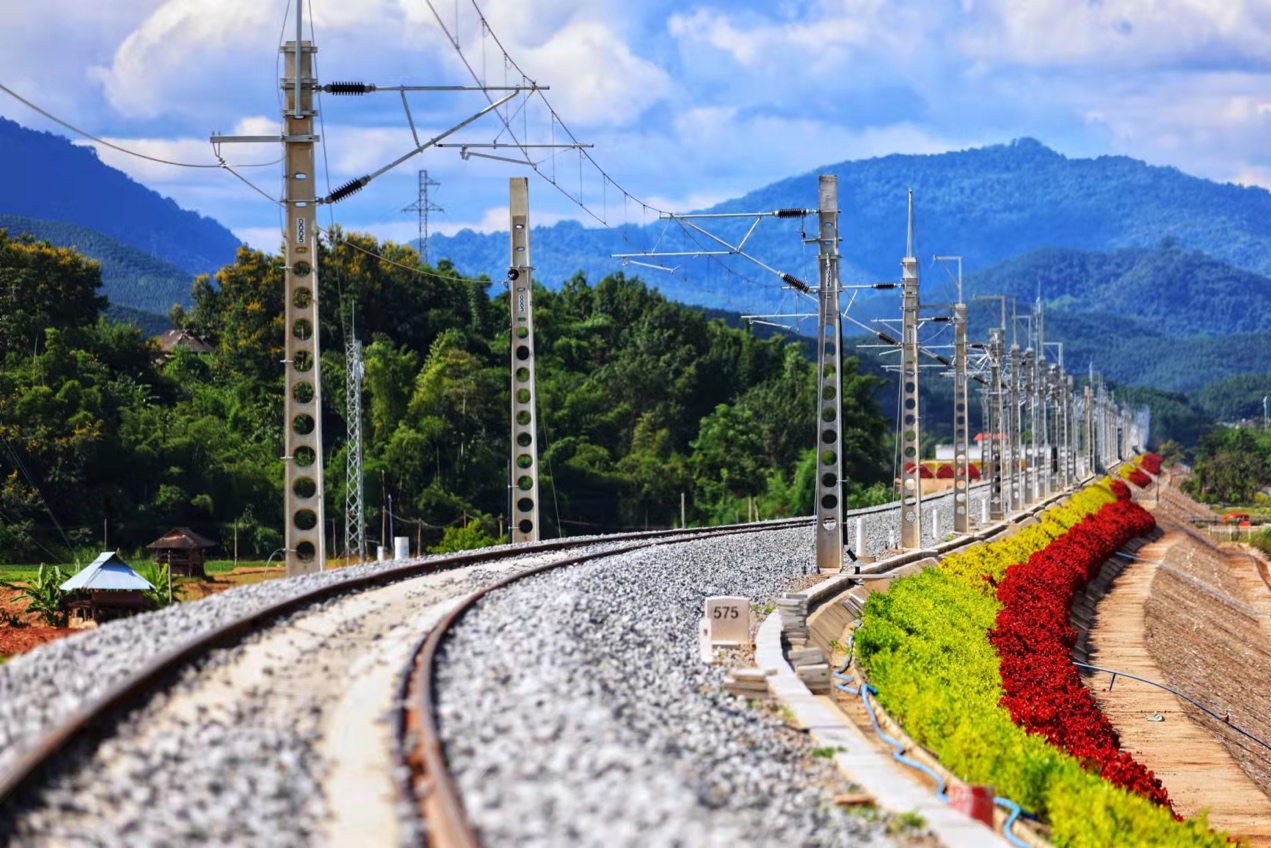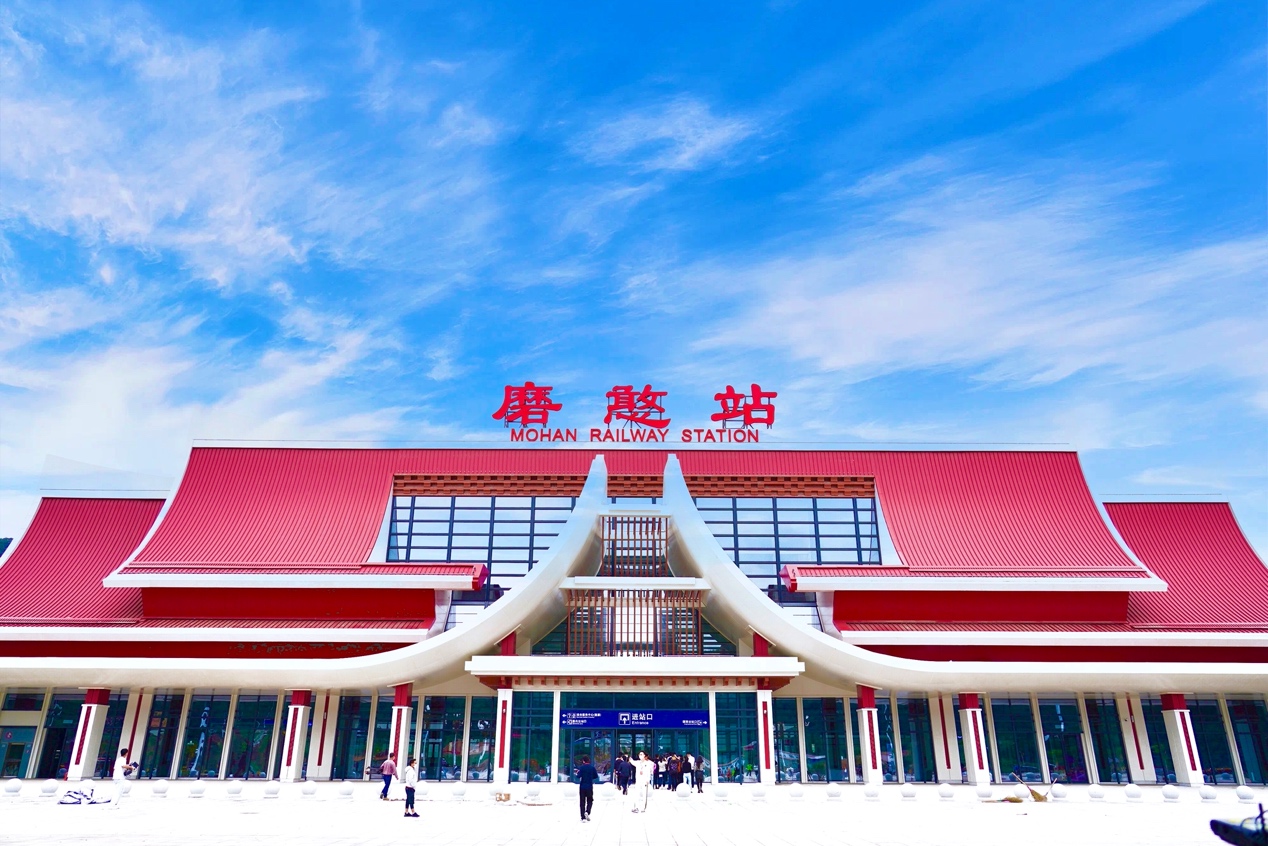02:28

The China-Laos railway was launched on Friday with a special inauguration ceremony held simultaneously in both countries amid high expectations for the opportunities the cross-border link will bring.
The 1,000-plus-kilometer line, connecting Kunming, the provincial capital of southwest China's Yunnan, with the Lao capital of Vientiane, is a key project of the Belt and Road Initiative, and will help Laos transform from a landlocked country to a land-linked hub. It took some six years to complete the railway.
"We gained valuable experience from this project, which is significant in improving our railway construction capabilities, especially in building tunnels and giant bridges under complicated geological conditions," Ma Youliang, deputy commander of the project, said.
"It's also a good example for international cooperation," Ma added.

A train crosses a bridge in Yunnan Province, China. /China Railway Kunming Bureau
A train crosses a bridge in Yunnan Province, China. /China Railway Kunming Bureau
This year marks the 60th anniversary of the establishment of diplomatic ties between China and Laos. Over the past decades, people from both countries have forged a high level of trust and friendship. Now, the massive project will further promote people-to-people exchanges.
"The railway makes it easier for more people from my country to come to China to study or travel. After graduation, I'll bring my family here by train," Soukdavane Rattanabandith, a Lao student from the Kunming-based Yunnan Minzu University, told CGTN.
The young man said he planned to start his own company in the future and believed that the rail line will greatly facilitate trade between the two sides.

A section of the China-Laos railway in China. /China Railway Kunming Bureau
A section of the China-Laos railway in China. /China Railway Kunming Bureau
It's also great news for business people at the border. Huang Jie runs a cross-border e-commerce company in the border town of Mohan, where an economic cooperation zone between China and Laos has been set up. He expects more business opportunities.
"The railway will bring in more people here. And the transportation cost will be reduced to a large extent, while the logistics efficiency will be improved," Huang said.
Many say the project can benefit the greater region of Southeast Asia.
"I think more agricultural products from Thailand, such as fruit, will enter the Chinese market more easily, as the transportation costs will be greatly reduced. The Chinese people will enjoy them at much lower prices," Jaruwan Udomsab from Thailand said. She took the ride on the very first train of the railway on Friday.
She said that the rail line will also greatly boost cross-border tourism between China and Thailand.

Mohan Station, the last stop on the Chinese section of the China-Laos railway. /CGTN
Mohan Station, the last stop on the Chinese section of the China-Laos railway. /CGTN
The railway passes through well-known natural and cultural sites in both countries, such as Xishuangbanna Dai Autonomous Prefecture, which is known for dense tropical rainforests and its unique ethnic culture. It's also home to the largest natural habitat for wild Asian elephants in China.
"I hope more and more tourists can visit Xishuangbanna and meet the elephants to learn more about this endangered species. It's conducive to promoting protection awareness among the public," Chen Jiming, a keeper at the Asian Elephant Breeding and Rescue Center in Xishuangbanna, said.
(Cover photo: A train runs on the Chinese section of the China-Laos Railway. /China Railway Kunming Bureau)

